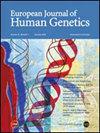Mechanistic insights into 16p13.3 microdeletions encompassing TBC1D24 and ATP6V0C through advanced sequencing approaches
IF 4.6
2区 生物学
Q2 BIOCHEMISTRY & MOLECULAR BIOLOGY
引用次数: 0
Abstract
Chromosomal microdeletions represent a complex class of genetic disorders. Recently, 16p13.3 microdeletions encompassing TBC1D24 and ATP6V0C have gained prominence as structural variants associated with neurodevelopmental disorders, but their occurrence mechanisms remain unexplored. We used a comprehensive range of sequencing technologies (mate pair genome sequencing, linked-pair genome sequencing, nanopore sequencing, targeted locus amplification (TLA), long range and nested PCR followed by Sanger sequencing), to map the exact 16p13.3 microdeletion breakpoints in eight previously reported individuals. Microdeletion breakpoints were successfully mapped in all patients using TLA, split read analysis, PCR/Sanger sequencing, or nanopore sequencing. Alu sequences and/or non-B DNA motifs were detected in all patients. Mechanistic analysis identified distinct pathways underlying these rearrangements. Noteworthy, two unrelated individuals carried identical microdeletions that might have been mediated by an atypical form of non-allelic homologous recombination, given the presence of a 639 bp sequence with 96.2% homology. Microhomology-mediated end-joining and non-homologous end-joining emerged as other mechanisms driving these 16p13.3 microdeletions, which differs from other studied contiguous gene deletion syndromes. This research contributes to a deeper understanding of microdeletion-associated disorder pathophysiology in medical genetics.

通过先进的测序方法深入了解包含TBC1D24和ATP6V0C的16p13.3微缺失的机制。
染色体微缺失是一类复杂的遗传疾病。最近,包括TBC1D24和ATP6V0C在内的16p13.3微缺失作为与神经发育障碍相关的结构变异而受到关注,但其发生机制仍未被探索。我们使用了一系列全面的测序技术(配偶对基因组测序、链对基因组测序、纳米孔测序、靶向位点扩增(TLA)、远程和巢式PCR以及Sanger测序),绘制了8个先前报道的个体的确切16p13.3微缺失断点。使用TLA、分裂读取分析、PCR/Sanger测序或纳米孔测序,在所有患者中成功地定位了微缺失断点。所有患者均检测到Alu序列和/或非b DNA基序。机制分析确定了这些重排背后的不同途径。值得注意的是,两个不相关的个体携带相同的微缺失,这可能是由非典型形式的非等位基因同源重组介导的,因为存在639bp序列,同源性为96.2%。微同源介导的末端连接和非同源末端连接是驱动这些16p13.3微缺失的其他机制,这与其他研究的连续基因缺失综合征不同。本研究有助于加深对医学遗传学中微缺失相关疾病病理生理学的理解。
本文章由计算机程序翻译,如有差异,请以英文原文为准。
求助全文
约1分钟内获得全文
求助全文
来源期刊

European Journal of Human Genetics
生物-生化与分子生物学
CiteScore
9.90
自引率
5.80%
发文量
216
审稿时长
2 months
期刊介绍:
The European Journal of Human Genetics is the official journal of the European Society of Human Genetics, publishing high-quality, original research papers, short reports and reviews in the rapidly expanding field of human genetics and genomics. It covers molecular, clinical and cytogenetics, interfacing between advanced biomedical research and the clinician, and bridging the great diversity of facilities, resources and viewpoints in the genetics community.
Key areas include:
-Monogenic and multifactorial disorders
-Development and malformation
-Hereditary cancer
-Medical Genomics
-Gene mapping and functional studies
-Genotype-phenotype correlations
-Genetic variation and genome diversity
-Statistical and computational genetics
-Bioinformatics
-Advances in diagnostics
-Therapy and prevention
-Animal models
-Genetic services
-Community genetics
 求助内容:
求助内容: 应助结果提醒方式:
应助结果提醒方式:


